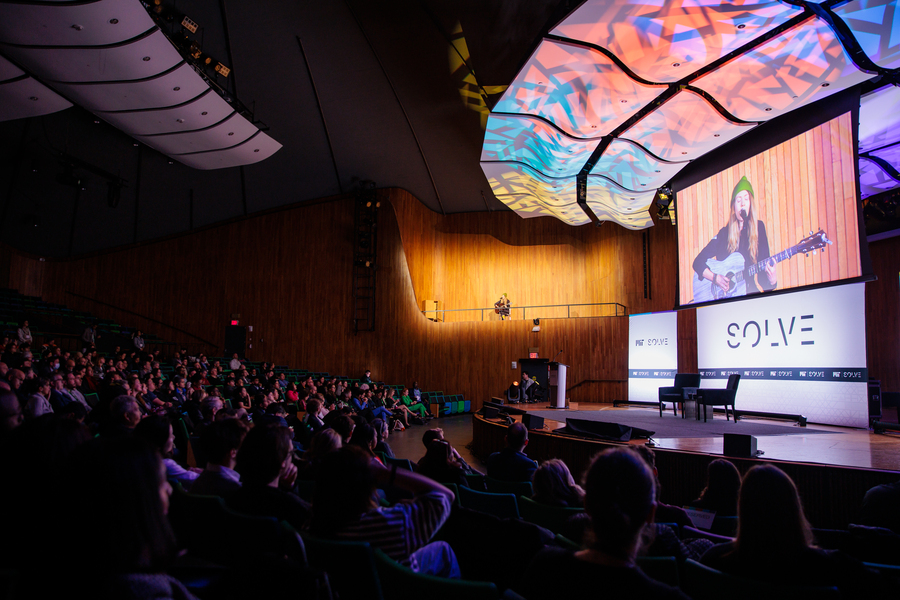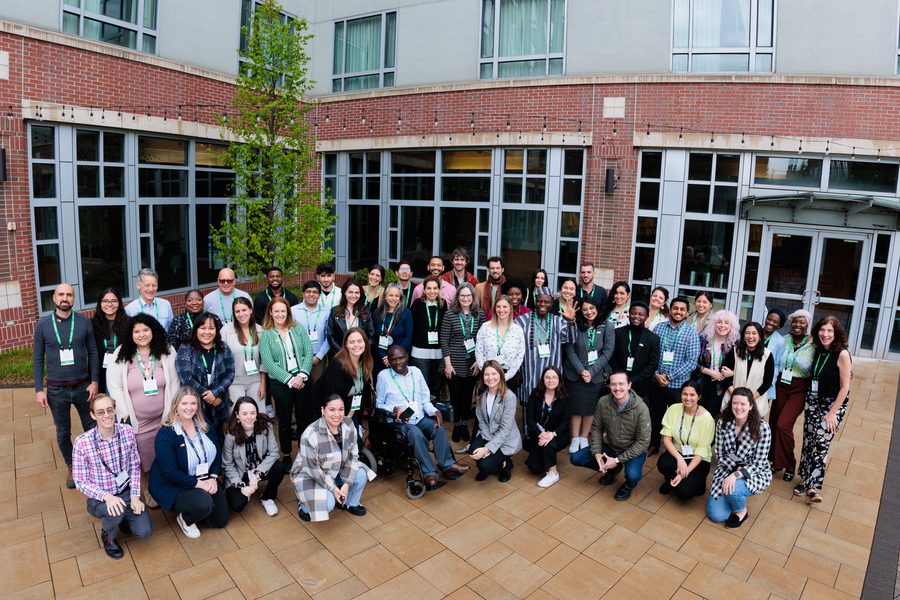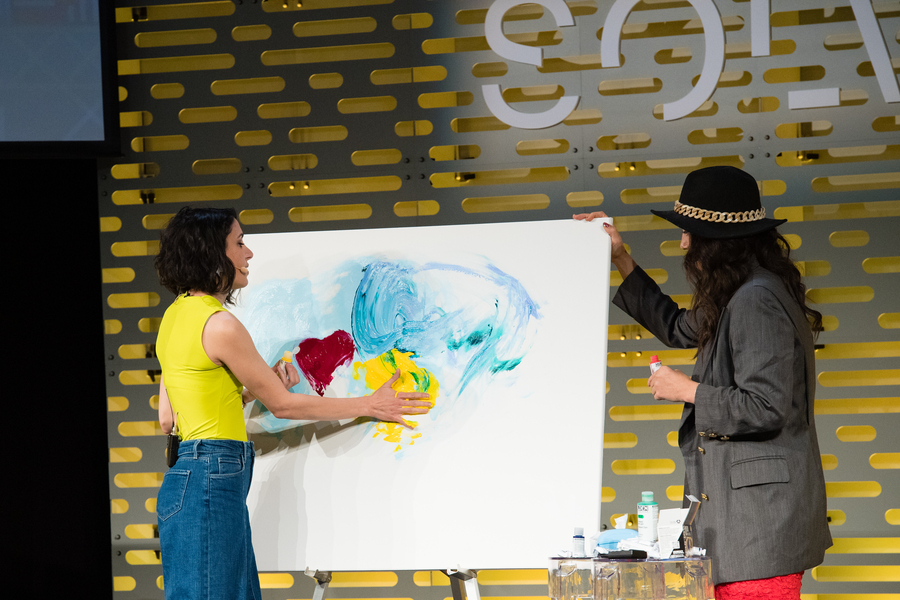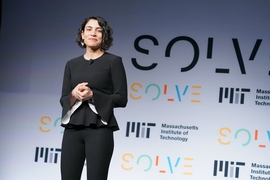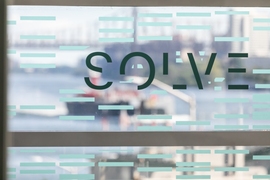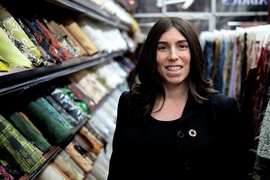“The scale, complexity, the global nature of the problems we’re dealing with are so big that no single institution, industry, or country can deal with them alone,” MIT President Sally Kornbluth stated in her first remarks to the Solve community.
Over 300 social impact leaders from around the world convened on MIT’s campus for Solve at MIT 2023 to celebrate the 2022 Solver class and to discuss some of the world’s greatest challenges and how we can tackle them with innovation, entrepreneurship, and technology.
These challenges can be complicated and may even feel insurmountable, but Solve at MIT leaves us with the hope, tools, and connections needed to find solutions together.
Hala Hanna, executive director of MIT Solve, shared what keeps her inspired and at the front line of social impact: “Optimism isn’t about looking away from the issues but looking right at them, believing we can create the solutions and putting in the work. So, anytime I need a dose of optimism, I look to the innovators we work with,” Hanna shared during the opening plenary, Unlocking our Collective Potential.
Over the course of three days, more than 300 individuals from around the world convened to celebrate the 2022 Solver class, create partnerships that lead to progress, and address solutions to pressing world issues in real-time.
Every technologist, philanthropist, investor, and innovator present at Solve at MIT left with their own takeaway, but three main themes seemed to underscore the overall discussions.
Technology and innovation are as neutral as the makers
Having bias is a natural part of what makes us human. However, being aware of our predispositions is necessary to transform our lived experiences into actionable solutions for others to benefit from.
We’ve largely learned that bias can be both unavoidable and applied almost instantly. Sangbae Kim, director of the Biomimetic Robotics Laboratory and professor of mechanical engineering at MIT, proved this through robotics demonstrations where attendees almost unanimously were more impressed with a back-flipping MIT robot compared to one walking in circles. As it turns out, it took one individual three days to program a robot to do a flip and over two weeks for a full team to program one to walk. “We judge through the knowledge and bias we have based on our lived experiences,” Kim pointed out.
Bias and lived experiences don’t have to be bad things. The solutions we create based on our own lives are what matter.
2022 Solver Atif Javed, co-founder and executive director of Tarjimly, began translating for his grandmother as a child and learned about the struggles that come with being a refugee. This led him to develop a humanitarian language-translation application, which connects volunteer translators with immigrants, refugees, nongovernmental organizations (NGOs), and more, on demand.
Vanessa Castañeda Gill, 2022 Solver and co-founder and CEO of Social Cipher, transformed her personal experience with ADHD and autism to develop Ava, a video game empowering neuro-divergent youth and facilitating social-emotional learning.
For Kelsey Wirth, co-founder and chair of Mothers Out Front, the experience of motherhood and the shared concerns for the well-being of children are what unite her with other moms.
Whitney Wolf Herd, founder and CEO of Bumble, shared that as a leader in technology and a person who witnessed toxic online spaces, she sees it as her responsibility to spearhead change.
During the plenary, “Bringing us Together or Tearing us Apart?” Wolf Herd asked, “What if we could use technology to be a force for positivity?” She shared her vision for equality and respect to be part of the next digital wave. She also called for technology leaders to join her to ensure “guardrails and ground rules” are in place to make sure this goal becomes a reality.
Social innovation must be intersectional and intergenerational
During Solve at MIT, industry leaders across sectors, cultures, ages, and expertise banded together to address pressing issues and to form relationships with innovators looking for support in real time.
Adam Bly, founder and CEO of System Inc., discussed the interconnected nature of all things and why his organization is on a mission to show the links, “We’re seeing rising complexity in the systems that make up life on earth, and it impacts us individually and globally. The way we organize the information and data we need to make decisions about those systems [is highly] siloed and highly fragmented, and it impairs our ability to make decisions in the most systemic, holistic, rational way.”
President and CEO of the Natural Resources Defense Council Manish Bapna shared his advocacy for cross-sector work: “Part of what I’ve seen really proliferate and expand in a good way over the past 10 to 15 years are collaborations involving startups in the private sector, governments, and NGOs. No single stakeholder or organization can solve the problem, but by coming together, they bring different perspectives and skills in ways that can create the innovation we need to see.”
For a long time, STEM (science, technology, engineering, and math) were seen as the subjects that would resolve our complex issues, but as it turns out, art also holds a tremendous amount of power to transcend identity, borders, status, and concerns, to connect us all and aid us in global unity. Artists Beatie Wolfe, Norhan Bayomi, Aida Murad, and Nneka Jones showed us how to bring healing and awareness to topics like social and environmental injustice through their music, embroidery, and painting.
The 2023 Solv[ED] Innovators, all age 24 or under, have solutions that are improving communication for individuals with hearing loss, transforming plastic waste into sustainable furniture, and protecting the Black birthing community, among other incredible feats.
Kami Dar, co-founder and CEO of Uniti Networks, summarizes the value of interconnected problem-solving: “My favorite SDG [sustainable development goal] is SDG number 17— the power of partnership. Look for the adjacent problem-solvers and make sure we are not reinventing the wheel.”
Relationships and the environment connect us all
Solve is working to address global challenges on an ongoing basis connected to climate, economic prosperity, health, and learning. Many of these focus areas bleed into one another, but social justice and climate action served as a backdrop for many global issues addressed during Solve at MIT.
“When we started addressing climate change, we saw it primarily as technical issues to bring down emissions … There's inequality, there’s poverty, there are social tensions that are rising … We are not going to address climate change without addressing the social tensions that are embedded,” said Lewis Akenji, managing director of the Hot or Cool Institute. Akenji sees food, mobility, and housing as the most impactful areas to focus solutions on first.
During the “Ensuring a Just Transition to Net Zero” plenary, Heather Clancy, vice president and editorial director at Greenbiz, asked panelists what lessons they have learned from their work. Janelle Knox Hayes, professor of economic geography and planning at MIT, shared that listening to communities, especially front-line and Indigenous communities, is needed before deploying solutions to the energy crisis. “Climate work has this sense of urgency, like it rapidly has to be done … to do really engaged environmental justice work, we have to slow down and realize even before we begin, we need a long period of time to plan. But before we even do that, we have to rebuild relationships and trust and reciprocity … [This] will lead to better and longer-lasting solutions.”
Hina Baloch, executive director and global head of climate change and sustainability strategy and communication at General Motors, asked Chéri Smith, founder of Indigenous Energy Initiative, to share her perspective on energy sovereignty as it relates to Indigenous communities. Smith shared, “Tribes can’t be sovereign if they’re relying on outside sources for their energy. We were founded to support the self-determination of tribes to revamp their energy systems and rebuild, construct, and maintain them themselves.”
Smith shared an example of human and tribal-centered innovation in the making. Through the Biden administration's national electronic vehicle (EV) initiative, Indigenous Energy Initiative and Native Sun Community Power Development will collaborate and create an inter-tribal EV charging network. “The last time we built out an electric grid, it deliberately skipped over tribal country. This time, we want to make sure that we not only have a seat at the table, but that we build out the tables and invite everyone to them,” said Smith.
Solve at MIT led to meaningful discussions about climate change, intersectional and accessible innovation, and the power that human connection has to unite everyone. Entrepreneurship and social change are the paths forward. And although the challenges ahead of us can be daunting, with community, collaboration, and a healthy dose of bravery, global challenges will continue to be solved by agile impact entrepreneurs all around the world.
As Adrianne Haslet, a professional ballroom dancer and Boston Marathon bombing survivor, reminded attendees, “What will get you to the finish line is nothing compared to what got you to the start line.”
